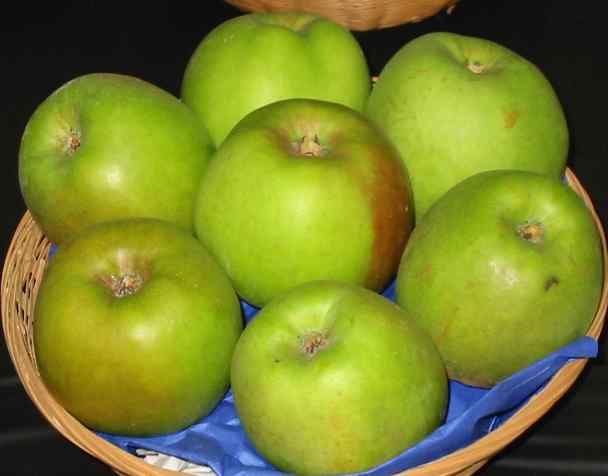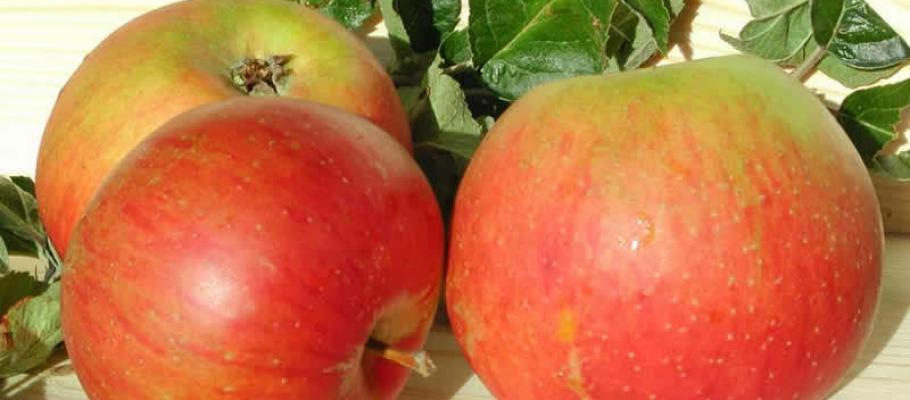Blenheim Orange
Chance seedling
Blenheim (also: Goldrenette of Blenheim, Blenheim Orange ) is a cultivar of apple (Malus domestica). She was found as a chance seedling in 1740 by Kemster in Woodstock near Blenheim Palace.
Description
Fruit
The large to very large, flachkugelige fruit is 75 mm wide and 60 mm high and reaches a weight of 165 grams. The smooth, dry, velvety solid to brittle shell is yellow-green to reddish- yellow colored and marbled to on the sunny side of 30 % to 50 % cloudy reddish yellow turbid reddish purple. The fruit is slightly sensitive to pressure and therefore well suited for transport. The medium firm, yellowish white flesh is fine-celled and juicy. The taste is sweet and harmonious mildsäuerlich. The stem is short to medium in length and thickness.
The maturity for consumption is from November to January, the pulp is rapidly crumbling. To cook it already is starting in September. The apple is suitable for fresh consumption and the domestic preparation. When cooking it retains comparatively much structure.
Tree
The tree is very vigorous, especially in youth, forming a densely branched, large and wide flachkugelige crown, with almost flat from side branches. The leaves are large and uneven.
The flowering time is of medium length. Harvest Ripe is the tree, depending on climate, between late September and mid-October. The tree bears late and often only in relatively small quantities.
Cultivation
Blenheim requires sunny locations with fertile soil and good air circulation in the soil. If too dry or too moist soil the tree bears very little income, in high humidity tends to also be canker of fruit trees. The tree is triploid, and hence is a poor pollinator. He is susceptible to wind and highly susceptible to bitter pit, flesh browning, wilting, black rot, cancer, woolly apple aphid and apple leaf mosaic virus. Less sensitive he is to scab.
Especially in England also various mutants of the Blenheims were grown. These usually have a stronger red color than the parent form. Common mutants are Alden home Blenheim, Red Lead Home and Scarlet Blenheim.
History
Blenheim was found by a Mr. Kemster 1740 in Woodstock, Oxfordshire near Blenheim Palace. It was first planted locally only at this time as " Kemster 's Pippin " known in 1818 he enters on the broader market and received the 1822 Banksia Medal of the Horticultural Society,
Was the Blenheim formerly a valued and widespread variety, it is only sporadically available today. Blenheim was grown mainly for its taste and is considered a possible father of Cox's Orange Pippin.










